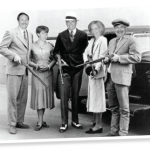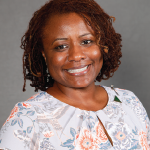
iQoncept / shutterstock.com
I was honored to be invited by Paula to write this column about my aspirations for the ACR’s future. As one might expect, I am also humbled by the prospect of trying to encapsulate the vision that has already been so elegantly provided by ACR leadership and its board of directors: “As the leading authority and trusted partner of rheumatology professionals, the ACR will continually advance the specialty and the future of rheumatology.”
Rather than trying to provide a new vision or indicate a new direction for the ACR, I just wanted to share with you my aspirations for the desired future state, which I shared with the search committee and the board of directors when they were in the process of selecting me as the next executive vice president. My hope is that over the next several years the ACR will continue to modernize, engage and grow.
Most healthcare providers have the same desires when it comes to their professional society. They want an organization that will serve as a global hub of knowledge within the specialty/disease; serve as a central resource in promoting new knowledge through support of innovative research, publications and presentations; and educate providers on best practices to improve health outcomes and increase patient and public awareness.
When it comes to ACR staff, the aspirations are the same, but they are also concerned with increasing membership; increasing attendance at professional meetings; and increasing member engagement in, connection to, and participation in advocacy efforts. Staff have many avenues to success, including better technology to improve ACR products, member and market research to determine the changing member needs and strategic consultants who can help as we partner with various ACR leaders to improve our current offerings. But which of these options is the best, and how will we know what type of innovation is required?
In his book, Competing Against Luck: The Story of Innovation and Customer Choice, Harvard Professor Clay Christensen says far too many companies take a hopeful approach to innovation, because they don’t know how to innovate. “Those who fail to innovate,” he says, “are simply asking the wrong question.” Instead of asking how we can get more members (and non-members) to buy our products or attend our events, the ACR should be asking: What are the needs of our members and non-members? Do our products meet their needs?
To use a more relevant example, you may ask yourself, “Why am I reading this article in The Rheumatologist? What is the job to be done?” It may surprise you that, based on the most recent ACR membership survey, more than 70% of respondents say they read The Rheumatologist. It’s the third most used member benefit behind only the Annual Meeting and the journals.
Some might say the job of The Rheumatologist is to keep members up to date with everything going on at the ACR. Others may say it provides relevant content that will help improve patient care. Still others may just be looking to take a productive break from work. The dilemma is that the answer to this question differs for everyone, and in fact, the multitude of answers that can be given for each of the ACR’s products and services make our jobs challenging and interesting.


